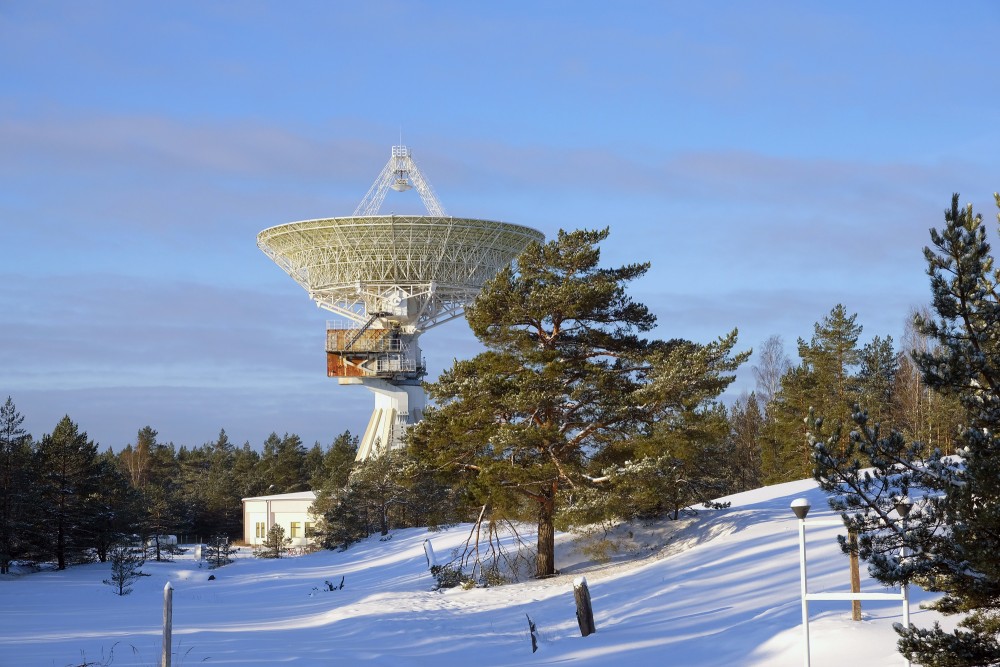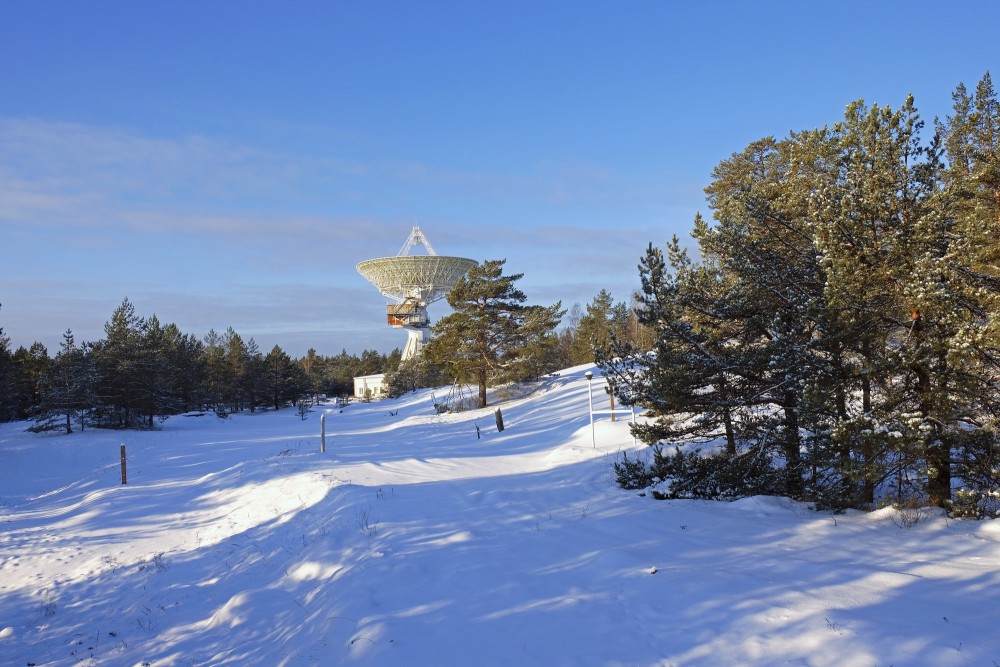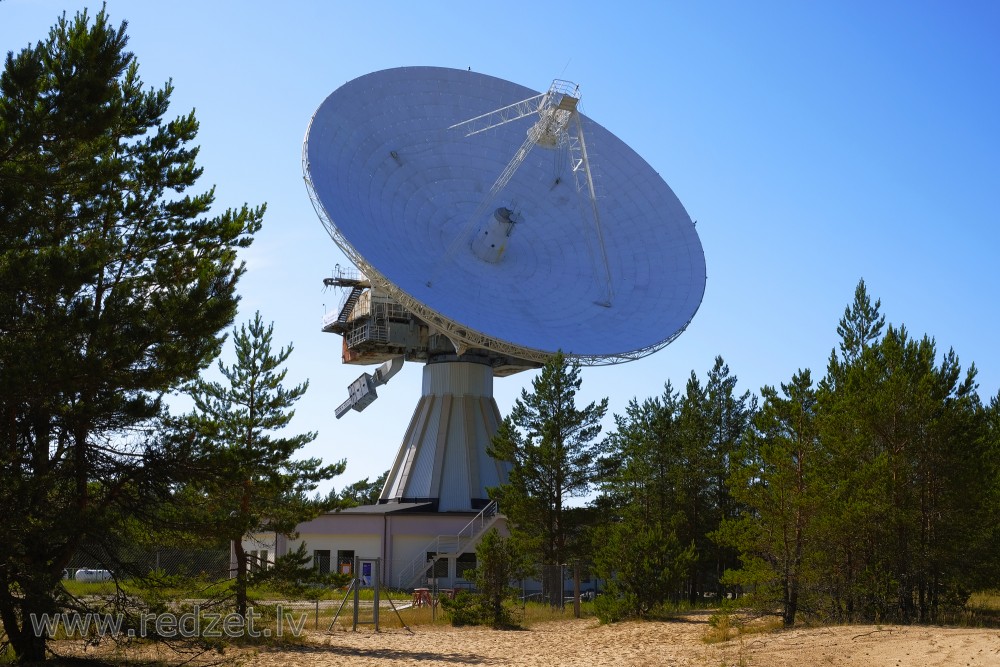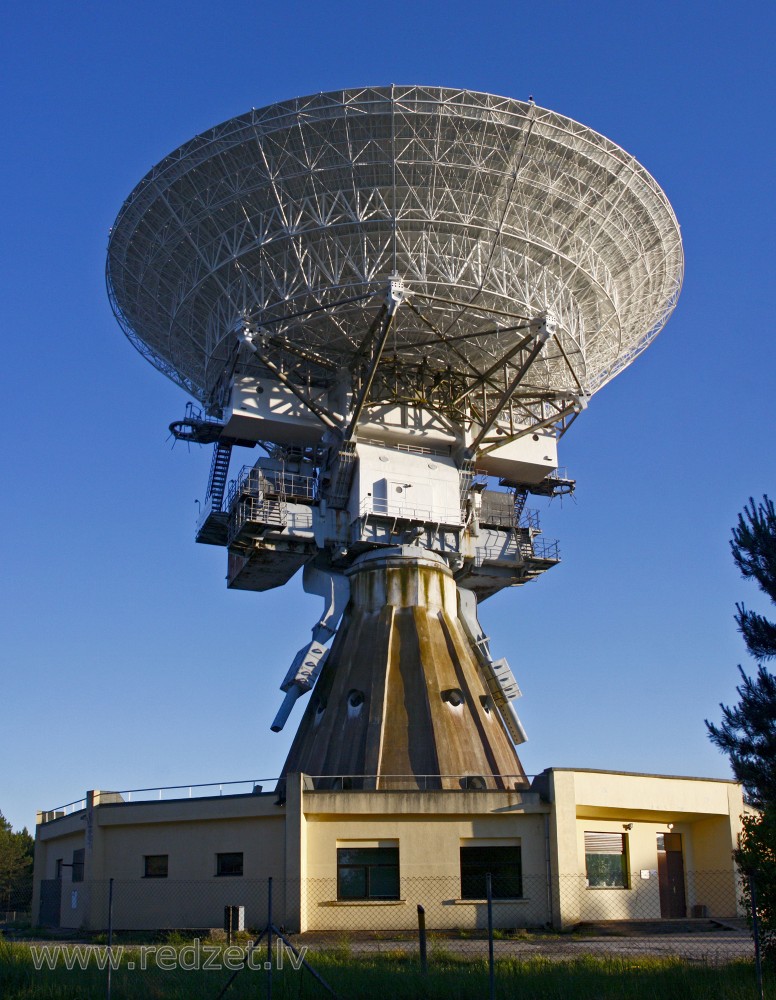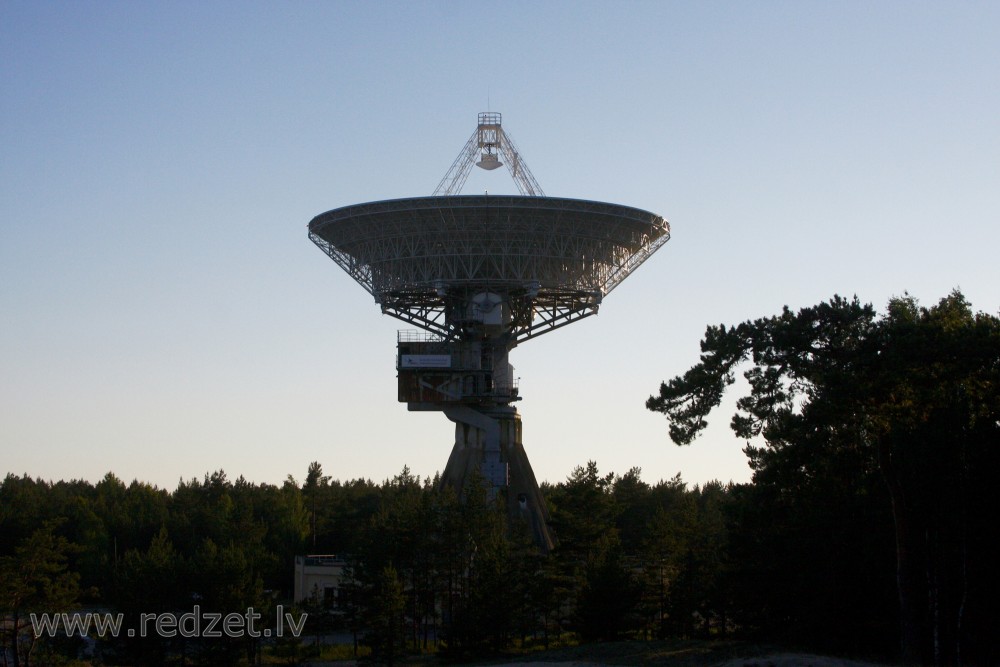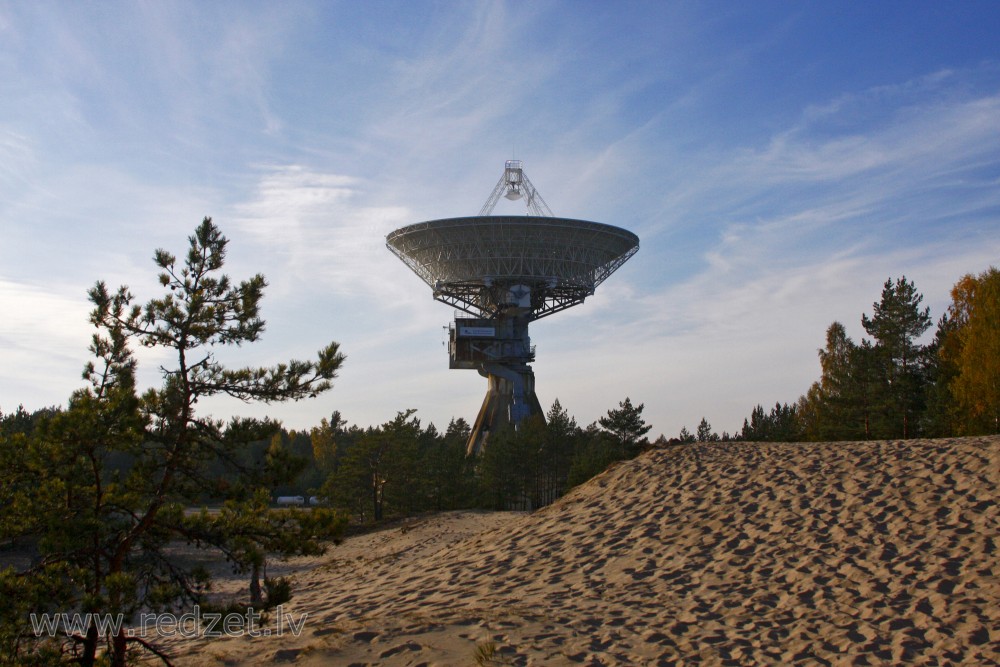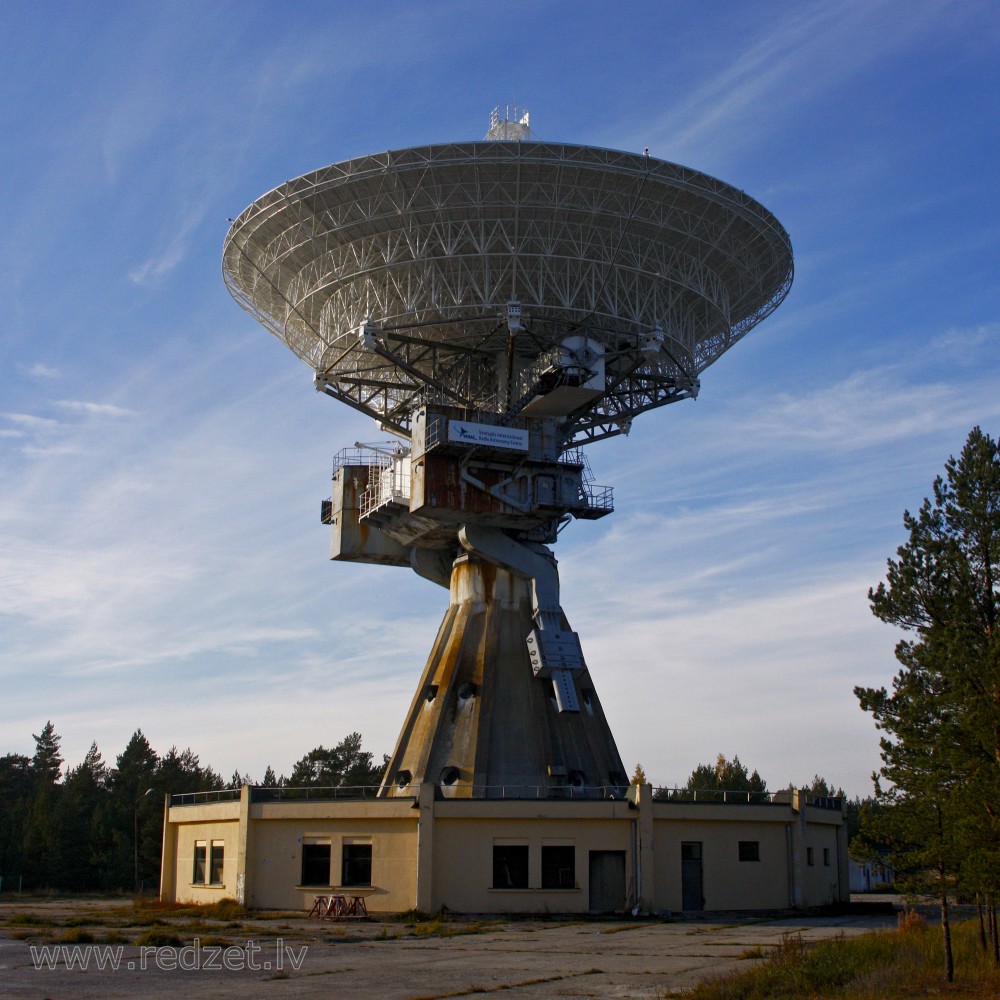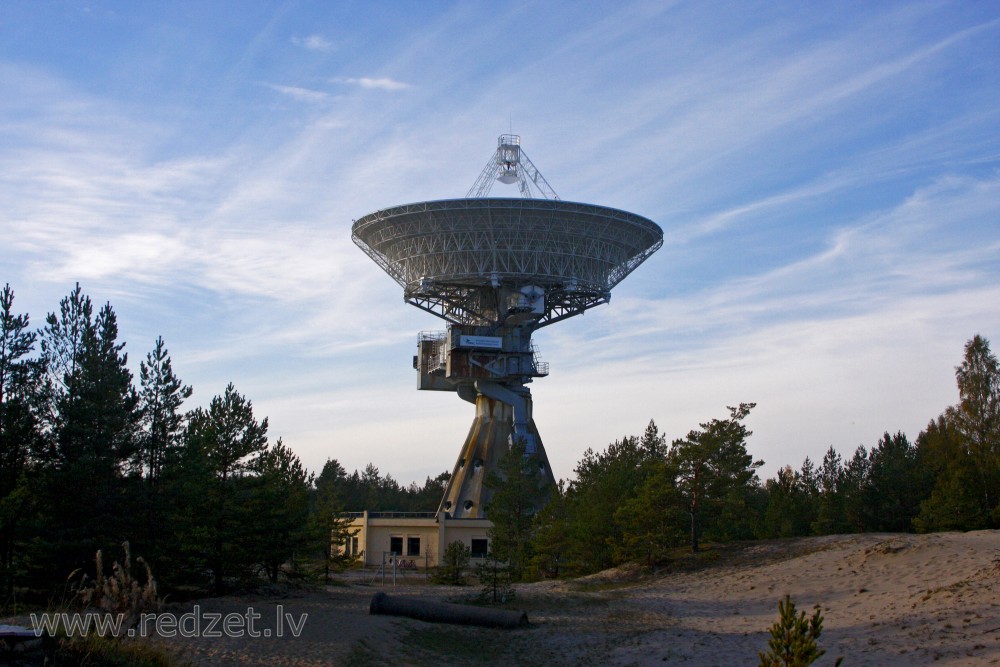Ventspils International Radio Astronomy Centre
The Ventspils International Radio Astronomy Centre (Latvian: Ventspils Starptautiskais radioastronomijas centrs – VIRAC) is an ex-Soviet radio astronomy installation 30 km north of Ventspils, Latvia, on the coast of the Baltic Sea in Ance parish. The installation was secret until 1993 after Latvia regained independence. It was taken over by the Latvian Academy of Sciences after the withdrawal of the Soviet Army in 1994. Since then, the two remaining radio telescopes have been repaired.
Description
Located in woodlands near Irbene, in Ventspils, Latvia, the centre was founded in 1974 by the Soviet military. It originally consisted of a 32-metre telescope, along with two smaller telescopes and a communications centre, and was known as Zvezdochka, meaning "Little Star". It was possibly used by the KGB during the Cold War to spy on communications between Europe and the United States.
It became a scientific research facility in the 1990s, established on 22 July 1994 as part of the Latvian Academy of Sciences, before becoming an independent organisation on 24 April 1996. It is now known as the Ventspils International Radioastronomy Center ("Ventspils Starptautiskais radioastronomijas centrs"), or the Irbene Astronomy Center.
RT-32
RT-32 is a 32-metre (105 ft) parabolic radio telescope. It is made up of over 20,000 components, and the central cone weighs 80 tonnes. The fully steerable telescope observes at centimetre wavelengths. The combination of size and precision engineering makes the larger dish especially valuable to scientists. The structure was built by a naval factory in Ukraine, and the interiors are reminiscent of a ship.
The telescope is mounted on a 25-metre-high (82 ft) tower. It has an 11.45-metre (37.6 ft) focal length, and a 2.5-metre (8.2 ft) secondary mirror.
In its first upgrade since being constructed, RT-32 was temporarily dismantled towards the end of 2014, and moved to a purpose-built shelter for restoration. The restoration includes re-welding the panels, replacing rusted parts, and repairing damage caused by the passage of time, water ingress and lightning strikes. The telescope will also be upgraded to enable it to be controlled remotely, and to be able to make more precise and sensitive observations. The telescope will be used in Very-long-baseline interferometry. The restoration cost around €16 million overall, with the restoration of the telescope panels costing around €1.5 million; the restoration was funded by the European Union and Latvian state and Ventspils district governments. The dish of the telescope was remounted in June 2015, with the restoration due to be completed in October 2015.
RT-16
The centre also has a 16 metres (52 ft) parabolic radio telescope.
en.wikipedia.org
The world’s eighth-largest radio telescope can be found in Kurzeme, not very far from the seaside between Kolka and Ventspils. Even today, the massive dish of the radio telescope, used during the Cold War years by the So
During the Soviet era, this site was dubbed The Starlet; it was extremely secret and served to intercept radio signals and telephone conversations in NATO countries. Soon after Latvia’s independence was restored, in 1994, the Russian military personnel left this place. However, as they withdrew, they smashed the equipment, poured acid into the electric motors and chopped up the cables. Fortunately, there had been no order to blow up the enormous antenna dishes.
With assistance from the European Union, the army radar has been transformed to serve scientific purposes: now the 32-metre wide antenna, weighing 600 tonnes, is pointed towards the most remote corners of space. It is the largest radio telescope in Northern Europe, which can “see” sound just like a bat, catches radiation unseen by the human eye and turns it into an image. Astronomers observe the Sun this way, as well as the oldest radiation in existence: particles that originated billions of years ago in the wake of the Big Bang, the moment of the birth of the universe.
A second radio telescope has also been renovated in Irbene (16 metres in diameter), which will soon be used to track the first Latvian satellite, currently being built by Latvian students in cooperation with Germans at the University of Bremen. The military past in Irbene has bequeathed it a number of crumbling structures, about which Juris Žagars, doctor of physics and head of the Ventspils International Radio Astronomy Centre, quips: “You could shoot a horror movie called Frankenstein and the KGB here without having to spend a single lat for the sets.”
As the Irbene radar is no longer a secret military object, it is possible to tour it, with guides also available. The tour includes more than a mere walk around the grounds: it is also possible to climb up to the external platforms on the upper floors of the telescopes and relish the beautiful views extending across the Kurzeme forests. Since the spring of 2009, it is also possible to go for a walk in the underground tunnel connecting the larger radio telescope with the technical headquarters.
www.kurzeme.lv
